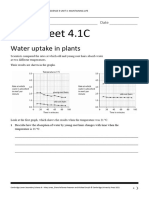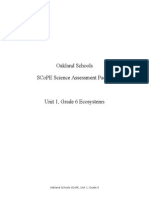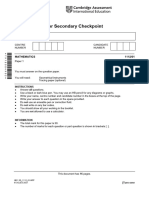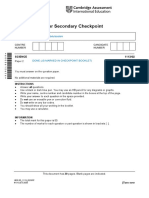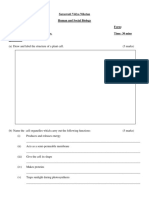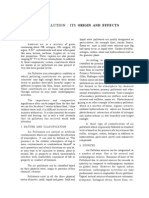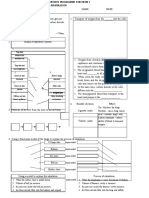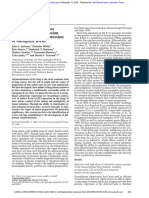GCSE BIOLOGY
CELLS
QUESTIONSHEET 1
Low Demand Questions
ctiv
e.c
om
The diagrams show some organs in the human body.
Name the organs labelled A, B, C, D and E.
ma
(a)
A. .......................................................................................................................................................... [1]
he
B. .......................................................................................................................................................... [1]
C. .......................................................................................................................................................... [1]
ww
w.c
D. .......................................................................................................................................................... [1]
E. .......................................................................................................................................................... [1]
(b)
Which of the organs A, B, C, D or E
(i)
produces urine?
......................................................................................................................................................................... [1]
(ii) pumps blood around the body?
......................................................................................................................................................................... [1]
(iii) controls the activity of the body?
......................................................................................................................................................................... [1]
(iv) absorbs oxygen from the air?
......................................................................................................................................................................... [1]
TOTAL / 9
�GCSE BIOLOGY
CELLS
QUESTIONSHEET 2
Low Demand Questions
Match one of the structures from the list with each of the statements.
ovary
testes
bladder
(i)
ear
alveolus trachea (windpipe)
artery
kidney
vein
oesophagus (gullet)
liver
blood
stomach
eye
large intestine
carries blood to organs.
om
......................................................................................................................................................................... [1]
(ii) contains light-sensitive cells.
......................................................................................................................................................................... [1]
e.c
(iii) produces digestive enzymes.
(iv) produces urea.
ctiv
......................................................................................................................................................................... [1]
......................................................................................................................................................................... [1]
ma
(v) carries carbon dioxide from the cells.
......................................................................................................................................................................... [1]
(vi) absorbs oxygen from the air.
ww
w.c
(vii) produces sperm.
he
......................................................................................................................................................................... [1]
......................................................................................................................................................................... [1]
(viii) carries food from the mouth.
......................................................................................................................................................................... [1]
(ix) produces eggs.
......................................................................................................................................................................... [1]
(x) stores urine.
......................................................................................................................................................................... [1]
TOTAL / 10
�GCSE BIOLOGY
CELLS
QUESTIONSHEET 3
Low Demand Questions
(a)
All living things carry out certain life processes.
Name the life process given in the following definitions
(i)
the release of energy from food.
......................................................................................................................................................................... [1]
(ii) the ability to react to the surroundings.
om
......................................................................................................................................................................... [1]
(iii) the release of waste products.
e.c
......................................................................................................................................................................... [1]
(iv) the production of offspring.
To stay alive both plants and animals need a source of food.
(i) How do animals obtain food?
(ii) How do green plants obtain food?
ma
......................................................................................................................................................................... [1]
he
..............................................................................................................................................................................
......................................................................................................................................................................... [2]
ww
w.c
(b)
ctiv
......................................................................................................................................................................... [1]
TOTAL / 7
�GCSE BIOLOGY
CELLS
QUESTIONSHEET 4
Low Demand Questions
This is a list of plant organs
flower
(a)
ovary
root
pollen
stigma
leaf
anther
stem
Which of these plant organs
(i)
absorbs water from the soil?
om
......................................................................................................................................................................... [1]
(ii) attracts insects?
......................................................................................................................................................................... [1]
e.c
(iii) makes food?
......................................................................................................................................................................... [1]
ctiv
(iv) produces pollen?
......................................................................................................................................................................... [1]
ma
(v) carries water up the plant?
(b)
Which part of a plant cell
(i)
gives the cell its shape?
he
......................................................................................................................................................................... [1]
ww
w.c
......................................................................................................................................................................... [1]
(ii) contains chromosomes?
......................................................................................................................................................................... [1]
TOTAL / 7
�GCSE BIOLOGY
CELLS
Medium Demand Questions
QUESTIONSHEET 5
The diagrams show two types of plant cell A and B.
B
Which cell is found in
(i)
ctiv
(a)
e.c
om
the leaf?
(ii) the root?
ma
......................................................................................................................................................................... [1]
Give one way in which the structure of each type of cell is adapted to its function.
(i)
cell A
ww
w.c
(b)
he
......................................................................................................................................................................... [1]
......................................................................................................................................................................... [1]
(ii) cell B
......................................................................................................................................................................... [1]
(c)
Name three structures found in both types of cell.
1............................................................................................................................................................................
2............................................................................................................................................................................
3....................................................................................................................................................................... [3]
(d)
Name one structure found only in cell A.
......................................................................................................................................................................... [1]
TOTAL / 8
�GCSE BIOLOGY
CELLS
QUESTIONSHEET 6
Medium Demand Questions
The following statements are all concerned with cells. Some of the statements are true and some are false. Tick
( ) the box to indicate the true statements.
1. All human cells have a nucleus.
om
2. Xylem cells in plants carries water.
3. Chloroplasts are found in cells of the leaf.
e.c
4. Chromosomes are found inside chloroplasts.
ctiv
5. Cell walls are found in all animal cells.
6. An organ is a group of cells with the same structure and function.
8. All animal cells contain cytoplasm.
ma
7. All cells have a cell membrane.
he
9. Vacuoles are found in most plant and animal cells.
ww
w.c
10.Genes are found on chromosomes.
TOTAL / 5
�GCSE BIOLOGY
CELLS
QUESTIONSHEET 7
Medium Demand Questions
The diagrams show a plant cell and an animal cell.
Cell Y
Name the parts labelled A, D and F.
ctiv
Cell X
(a)
e.c
om
A .................................................. D ....................................................... F ................................................ [3]
Which of the two cells is a plant cell?
ma
(b) (i)
......................................................................................................................................................................... [1]
he
(ii) Give two reasons for your choice.
1 ............................................................................................................................................................... [1]
(c)
ww
w.c
2 ............................................................................................................................................................... [1]
Give one function of
(i)
part B..................................................................................................................................................... [1]
(ii)
part C..................................................................................................................................................... [1]
(iii)
part E. .................................................................................................................................................... [1]
TOTAL / 9
�GCSE BIOLOGY
CELLS
Medium Demand Questions
QUESTIONSHEET 8
Below is a list of specialised cells.
Sperm cell
Root hair cell
Neurone
Palisade cell
Mesophyll cell
Red blood cell
Using straight lines, clearly underline the animal cells in the list above.
[3]
(b)
The table below shows a series of statements about cells. Tick the boxes to show whether the
statement is true or false. The first one has been done for you.
om
(a)
False
e.c
True
3
All living organisms consist of cells
Both animal and plant cells have a cell wall
ctiv
Both animal and plant cells have a cell membrane
Both animals and plant cells contain a vacuole
[4]
ww
w.c
he
ma
All plants cells contain chloroplasts
TOTAL / 7
�GCSE BIOLOGY
CELLS
QUESTIONSHEET 9
Medium Demand Questions
(a)
e.c
om
The diagrams show several types of specialised cell.
Name each type of cell.
ctiv
A ..................................................... B ................................................ C .........................................................
D ..................................................... E ..................................................
Give the letter (A, B, C, D or E) which
(i)
ma
(b)
[5]
does not contain a nucleus.
(ii) traps dust and bacteria.
he
......................................................................................................................................................................... [1]
ww
w.c
......................................................................................................................................................................... [1]
(iii) has half the normal number of chromosomes.
......................................................................................................................................................................... [1]
(iv) can ingest bacteria.
......................................................................................................................................................................... [1]
(v) carries information as electrical impulses.
......................................................................................................................................................................... [1]
(vi) contains haemoglobin.
......................................................................................................................................................................... [1]
(vii) is part of the nervous system.
......................................................................................................................................................................... [1]
TOTAL / 12
�GCSE BIOLOGY
CELLS
QUESTIONSHEET 10
Medium Demand Questions
The diagram shows a plant cell.
cell wall
vacuole
chloroplasts
nucleus
(a)
om
cytoplasm
State two features shown in the diagram which show this to be a plant cell.
e.c
1.......................................................................................................................................................................
2.................................................................................................................................................................. [2]
Name one structure found in plant and animal cells which is not labelled on the diagram.
ctiv
(b)
......................................................................................................................................................................... [1]
Nucleus
Structure
Vacuole
he
Type of cell
Red blood cell
Nerve cell
Root hair cell
ma
The table lists some of the structures shown on the diagram. Tick () the boxes in the table to show which
structures are present in the type of cells listed.
ww
w.c
(c)
Cytoplasm
[6]
TOTAL / 9
�GCSE BIOLOGY
CELLS
QUESTIONSHEET 11
Medium Demand Questions
e.c
om
A student set up the following apparatus.
Apparatus A
colour of starch
colour of iodine
milky
yellow
dark blue
yellow
colour of starch
milky
Apparatus B
colour of iodine
yellow
yellow
ma
At start
After 30 minutes
ctiv
The colour of the liquids inside and outside the visking tubing were recorded at the start and again
after 30 minutes. The table shows the results.
(a)
Explain why the starch in apparatus A changed colour.
he
..............................................................................................................................................................................
..............................................................................................................................................................................
(b)
ww
w.c
......................................................................................................................................................................... [3]
Why did the iodine in apparatus A and B not change colour?
......................................................................................................................................................................... [1]
(c) (i)
What would be the colour of the starch in apparatus B after 30 minutes.
......................................................................................................................................................................... [1]
(ii) Explain your answer.
..............................................................................................................................................................................
......................................................................................................................................................................... [2]
(d)
What would happen to the volume of the liquid inside the visking tubing in apparatus A if the apparatus
was left for several hours?
......................................................................................................................................................................... [1]
TOTAL / 8
�GCSE BIOLOGY
CELLS
QUESTIONSHEET 12
Medium Demand Questions
The diagram shows a side view of a section through the head and neck.
om
e.c
ctiv
Give the letter of the part (A, B, C or D) which
(i)
ma
(a)
leads to the lungs.
(ii) contains bone tissue.
he
......................................................................................................................................................................... [1]
ww
w.c
......................................................................................................................................................................... [1]
(iii) leads to the stomach.
......................................................................................................................................................................... [1]
(iv) contains ciliated epithelial cells.
......................................................................................................................................................................... [1]
(v) protects the spinal cord.
......................................................................................................................................................................... [1]
(vi) gives the sense of taste.
......................................................................................................................................................................... [1]
(b) What is the structure labelled X?
......................................................................................................................................................................... [1]
TOTAL / 7
�GCSE BIOLOGY
CELLS
QUESTIONSHEET 13
High Demand Questions
A student set up the following apparatus.
level after 3 hours
thin glass tube
thin glass tube
level at start
level at start
beaker
om
visking
(dialysis tubing)
water
Explain why the level of the liquid in the glass tube in apparatus A rises after 3 hours.
ctiv
(a)
sugar solution
e.c
sugar solution
water
..............................................................................................................................................................................
ma
..............................................................................................................................................................................
..............................................................................................................................................................................
......................................................................................................................................................................... [4]
he
(b) (i) What would happen to the level of liquid in apparatus B after 3 hours?
ww
w.c
......................................................................................................................................................................... [1]
(ii) Explain why this would happen.
..............................................................................................................................................................................
..............................................................................................................................................................................
......................................................................................................................................................................... [3]
(c)
What property of the visking tubing causes the changes in the levels of liquid?
......................................................................................................................................................................... [1]
TOTAL / 9
�GCSE BIOLOGY
CELLS
QUESTIONSHEET 14
High Demand Questions
The diagrams below show the stages in two types of cell division.
The number of chromosomes in the original cell is shown.
46
46
chromosomes
copied
chromosomes
copied
e.c
om
Cell division B
ctiv
Cell division A
ma
Give the number of chromosomes present in
(i)
cell A.
he
(a)
(ii) cell B.
ww
w.c
......................................................................................................................................................................... [1]
......................................................................................................................................................................... [1]
(iii) cells C.
......................................................................................................................................................................... [1]
(iv) cells D.
......................................................................................................................................................................... [1]
(Continued...)
QUESTIONSHEET 14 CONTINUED
�GCSE BIOLOGY
(b)
CELLS
Which type of cell division
(i)
takes place during growth?
......................................................................................................................................................................... [1]
(ii) forms gametes?
......................................................................................................................................................................... [1]
(c)
State two ways in which cell division type B differs from cell division type A.
om
..............................................................................................................................................................................
......................................................................................................................................................................... [2]
Explain the relationship between genes, chromosomes and the nucleus.
e.c
(d)
..............................................................................................................................................................................
ww
w.c
he
ma
ctiv
......................................................................................................................................................................... [2]
TOTAL / 10
High Demand Questions
QUESTIONSHEET 15
�GCSE BIOLOGY
CELLS
Cylinders of potato, each of the same length were placed into different concentrations of sugar solution.
After two hours the cylinders were removed and the length was measured.
The table shows the results.
2
60
63
length of cylinder at start /mm
length of cylinder after 2 hours /mm
(a)
Concentration of sugar solution %
4
6
8
10
60
60
60
60
61.5
60
59
58
On the grid below, plot a line graph of the length of the cylinders after 2 hours.
12
60
57
[3]
om
70
e.c
60
ctiv
length of cylinder
/mm
65
55
ma
50
4
10
12
concentration of sugar solution /%
he
(b)(i) In which concentrations of sugar solution did the potato cylinder increase in length?
......................................................................................................................................................................... [1]
ww
w.c
(ii) Explain how this is caused.
..............................................................................................................................................................................
..............................................................................................................................................................................
..............................................................................................................................................................................
......................................................................................................................................................................... [4]
(c)
Which concentration of sugar solution had no effect on the length of the potato cylinder?
......................................................................................................................................................................... [1]
(Continued...)
QUESTIONSHEET 15 CONTINUED
�GCSE BIOLOGY
(d)(i)
CELLS
Calculate the percentage decrease in the potato cylinder in 12% sugar solution.
..............................................................................................................................................................................
......................................................................................................................................................................... [2]
(e)(ii)
Explain how this decrease is caused.
..............................................................................................................................................................................
..............................................................................................................................................................................
om
..............................................................................................................................................................................
ww
w.c
he
ma
ctiv
e.c
......................................................................................................................................................................... [4]
TOTAL / 15
High Demand Questions
QUESTIONSHEET 16
�GCSE BIOLOGY
CELLS
The table shows the relative amounts of DNA in the nucleus of the cells of the same animal.
Type of cell
Skin cell
Liver cell
Sperm cell
Red blood cell
White blood cell
Kidney cell
Explain why the red blood cell has no DNA.
om
(a)
Relative amount of DNA /arbitrary units
800
800
400
0
800
800
..............................................................................................................................................................................
e.c
......................................................................................................................................................................... [2]
(b)
Why is the DNA of sperm cells half that of other cells?
..............................................................................................................................................................................
ctiv
..............................................................................................................................................................................
......................................................................................................................................................................... [3]
State the relative amount of DNA in arbitrary units you would expect to find in
(i)
ma
(c)
a cell from the lining of the mouth.
he
......................................................................................................................................................................... [1]
(ii) an egg cell.
ww
w.c
......................................................................................................................................................................... [1]
TOTAL / 7
High Demand Questions
QUESTIONSHEET 17
�GCSE BIOLOGY
CELLS
ctiv
e.c
om
In an investigation the following apparatus was set up.
The apparatus was left for 30 minutes and the increase in height of the liquid in the glass tube was recorded
every 5 minutes. The graph shows the result.
ma
60
40
30
he
increase in height
/mm
50
20
ww
w.c
10
10
15
20
25
30
time/minutes
(a)
What was the increase in height
(i)
after 5 minutes?
......................................................................................................................................................................... [1]
(ii) after 22.5 minutes?
......................................................................................................................................................................... [1]
(Continued...)
�GCSE BIOLOGY
CELLS
QUESTIONSHEET 17 CONTINUED
(b)
What was the increase in height per minute for the first 10 minutes?
......................................................................................................................................................................... [1]
(c)
What happened to the rate of increase in height after 15 minutes?
......................................................................................................................................................................... [1]
(d)
Why did the water increase in height?
om
..............................................................................................................................................................................
..............................................................................................................................................................................
ww
w.c
he
ma
ctiv
e.c
......................................................................................................................................................................... [3]
TOTAL / 7
High Demand Questions
QUESTIONSHEET 18
�GCSE BIOLOGY
CELLS
The diagram below shows two solutions which have been placed in a glass beaker. They are separated by a
partially permeable membrane. In compartment A there is a concentrated sucrose solution. In compartment B
there is an equal volume of distilled water.
A
om
- Sucrose
- Water molecule
Draw an arrow on the diagram to show which direction you would expect water molecules to move
i.e from A to B or from B to A.
[1]
(b)
What is this movement of water molecules called?
e.c
(a)
ctiv
..............................................................................................................................................................................
......................................................................................................................................................................... [1]
Place a tick (3) or cross (8) in the boxes to show whether the statements are true or false.
The first one has been done for you.
he
(c)
ma
The table below describes two types of transport of substances across the cell membrane.
Diffusion
8
ww
w.c
Requires energy
Molecules always move from a high
concentration to a lower concentration
Molecules can move from a lower to a
higher concentration, against the
concentration gradient
Active transport
3
[4]
TOTAL / 6
High Demand Questions
QUESTIONSHEET 19
�GCSE BIOLOGY
CELLS
In an experiment two cavity slides were filled with distilled water and labelled A and B. Some red blood cells
were placed in the water on A and some plant cells were placed in the water on B. The cells were observed
under the light microscope.
After a short time the red blood cells in A were seen to have burst. The plant cells did not burst.
(a)
Explain why the red blood cells burst.
..............................................................................................................................................................................
..............................................................................................................................................................................
(b)
om
......................................................................................................................................................................... [4]
Explain why the plant cells did not burst.
e.c
..............................................................................................................................................................................
..............................................................................................................................................................................
ww
w.c
he
ma
ctiv
......................................................................................................................................................................... [3]
TOTAL / 7
High Demand Questions
QUESTIONSHEET 20
�GCSE BIOLOGY
CELLS
The diagram shows a small part of an alveolus and a blood capillary.
wall of alveolus
wall of blood capillary
(a)
om
film of moisture
In which organ are alveoli found?
(b)
e.c
......................................................................................................................................................................... [1]
Where, on this diagram, is the concentration of oxygen greatest?
(c)
ctiv
......................................................................................................................................................................... [1]
Where, on this diagram, is the concentration of carbon dioxide greatest?
......................................................................................................................................................................... [1]
Explain how oxygen passes from the air in the alveolus into the blood.
ma
(d)
..............................................................................................................................................................................
he
..............................................................................................................................................................................
......................................................................................................................................................................... [3]
Give three ways in which the structure of the alveoli makes them well adapted
for the exchange of gases.
ww
w.c
(e)
..............................................................................................................................................................................
..............................................................................................................................................................................
......................................................................................................................................................................... [3]
TOTAL / 9





